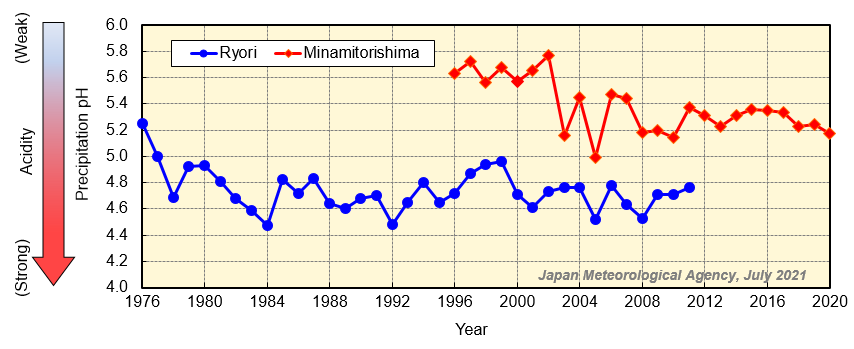Interannual variability of precipitation acidity in Japan
The Japan Meteorological Agency carried out the monitoring of the acidity (pH) of precipitation. One station is Ryori (Ofunato, Iwate), where the monitoring started in 1976, and ended in the end of 2011. Another is Minamitorishima (Ogasawara, Tokyo), where the monitoring started in 1996, and ended in the end of 2020. The observation at both stations are less affected by human activities.
At Ryori, the annual mean acidity of precipitation exceeded pH 5.0 shortly after the start of observation in 1976. However, there were no significant trends throughout the whole period of observation, and values have stayed in the range of pH 4.4 – 5.0 since then. At Minamitorishima, where the influence of human activity is weaker than at Ryori, the annual mean acidity of precipitation was well above pH 5.0 even in 2019. Acidity has remained strong since 2003, compared to the previous range of pH 5.5 – 5.8 from 1996 to 2002.
In 2003 and 2005, acidity strengthened at Minamitorishima. The primary reason for the low pH values observed was an influx of volcanic gas from the eruption of Mt. Anatahan in the Northern Mariana Islands about 1,200 km southwest of Minamitorishima. The volcanic activity was particularly strong between May and June 2003 and between April 2004 and September 2005. Strong acidity may also be influenced by acidic substances transported from the Asian continent.

Figure 1: Time series of annual mean pH weighted by precipitation amounts at Ryori and Minamitorishima